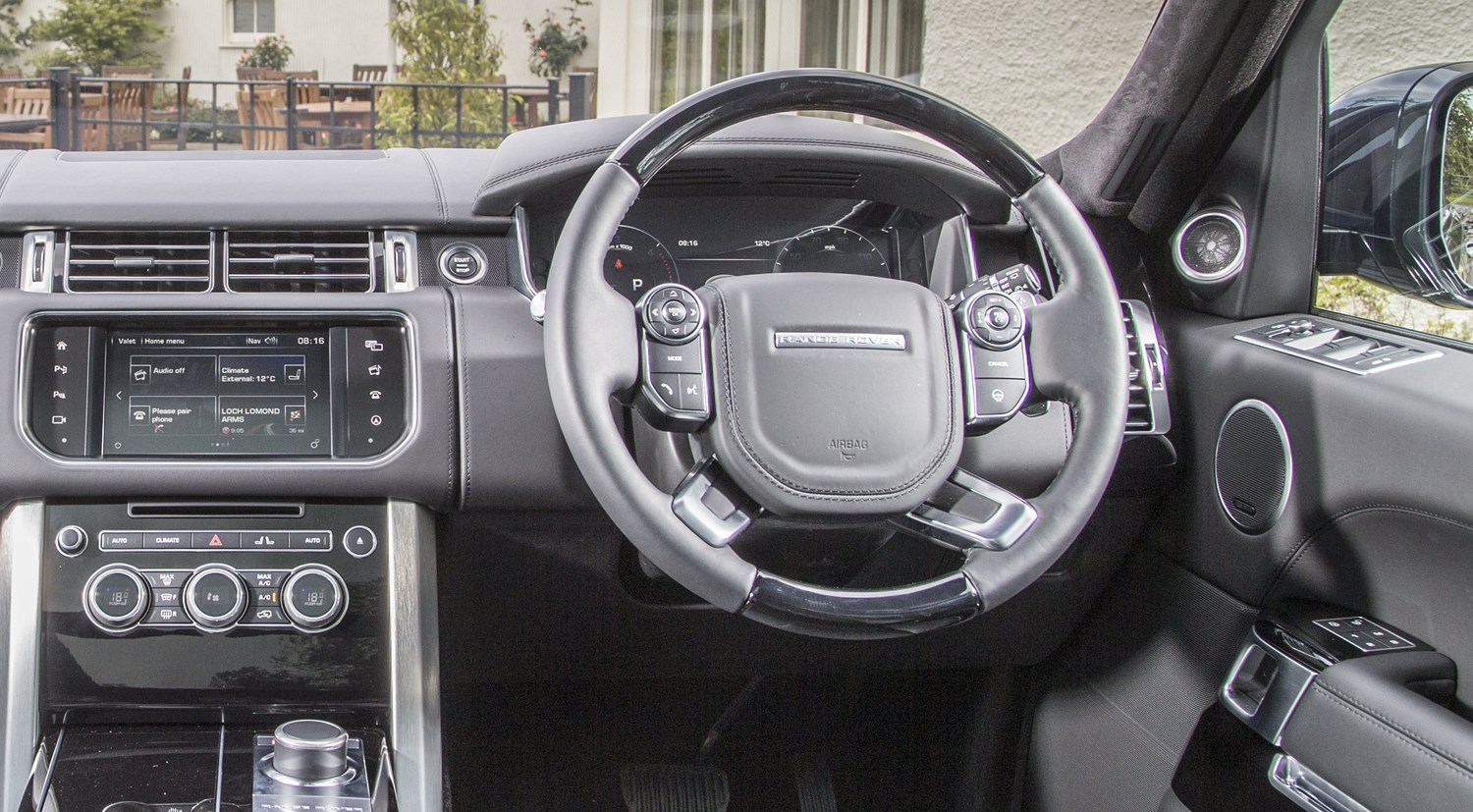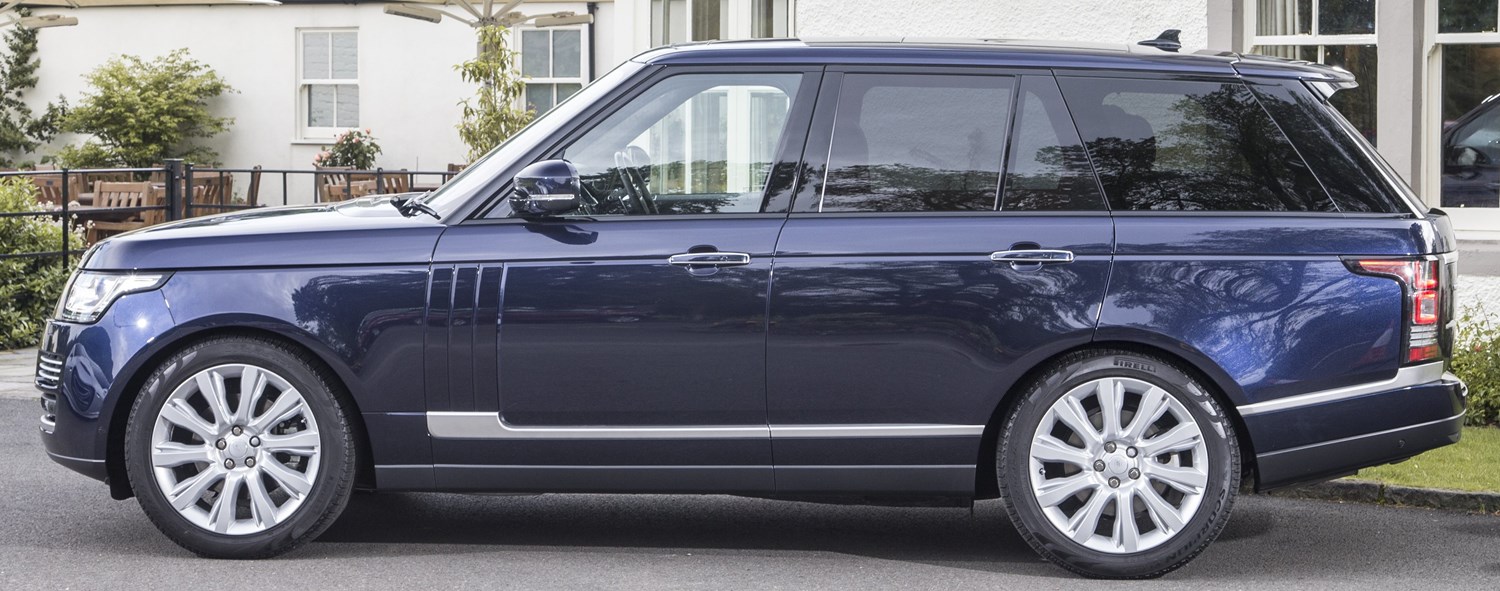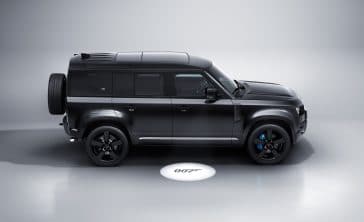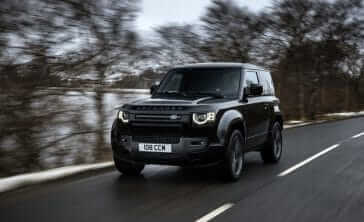Review
The Range Rover was launched in 1970 as a larger alternative to the traditional Land Rover 4x4 models. It was immediately successful and proved its off-road prowess by leading the first vehicle-based expedition to traverse the Americas from north to south.
It’s been nearly half a century since those first cars rolled off the production line but the Range Rover is still only in its fourth generation. That’s testament to the staying power of the luxury SUV, which has managed to adapt to changing buying habits without losing sight of its original go-anywhere ethos.
Over the years the Range Rover brand has expanded with the Sport, Evoque and Velar models offering more variety. But the standard SUV has remained true to itself – a large, practical SUV that appeals to those both in and out of cities.

Latest model
Introduced in 2012, the latest model might be starting to get a little long in the tooth – particularly as the rest of the Range Rover line-up expands and new rivals enter the market.
However, the Range Rover is still up there with the best of them, mixing luxury and elegance with incredibly capable off road ability.
In standard wheelbase form, the entry-level trim is Vogue, which starts at £76,350, while the £132,800 SVAutobiography sits at the top of the range with all the bells and whistles. In long wheelbase form, the Range Rover is only available with the higher Autobiography and SVAutobiography trim levels, starting at £108,650.
There are five engines available with a V6 and V8 option for both petrol and diesel, while a hybrid option is also available that mates an electric motor to the V6 diesel engine for improved economy.
Value for money
As is befitting of a vehicle that’s pitched at luxury car buyers, the spec is highly impressive.
The entry-level Vogue trim is available from £76,350, and with such a high price of entry standard equipment is pleasing. On the outside, there are 20-inch alloy wheels, a panoramic roof and a boot that can be opened without being touched. Inside, a 380-watt Meridian audio system, Oxford leather seats and navigation are also standard equipment.
Upgrade to the top-spec SVAutobiography trim, and the alloy wheels are upgraded to 22 inches with red Brembo brakes, while vents on the bodywork and quad tailpipes hint at the sportier nature. Inside, the audio system is upgraded to a 1700-watt Meridian system.
With the Range Rover not due a facelift until later in 2017, early fourth generation models are available at quite a discount. For the cost of a new entry-level Vogue model, it’s possible to get a two- or three-year-old top-spec Autobiography – look carefully and you’ll likely find models that had many option boxes ticked when new.
Looks and image
One of the Range Rover’s big selling points is its brand appeal – it has become an iconic ‘lifestyle’ vehicle, with many bloggers and celebrities turning to the brand.
For those who need a comfortable family car that also comes with off-road ability, few vehicles even come close to the Range Rover. The great thing about the fact it’s designed to keep going even after the roads have stopped is that however bad the road does get, the ride remains comfortable – potholes are no match the 4x4. The fact it was developed on British roads also contributes to the fact it rides so well here.
The Range Rover rewards a more relaxed style of driving. Really start to push the SUV into a corner and its relatively high centre of gravity will start to show – even with air suspension and active lean control as standard.
However, as cosseting cruisers go, you won’t get a more refined ride without going for a limousine from the likes of BMW or Mercedes.

Space and practicality
The advantage of an SUV over a luxury saloon is the cabin space afforded by the upright shape.
One of the most appealing features of the Range Rover is its high driving position, which gives a great view of the road. It does require stepping up into the cabin, but getting out is easy.
On the subject of safety, the Range Rover comes with all of the safety kit you’d expect as standard, including airbags for the driver and passenger, child locks and an intrusion sensor.
Of particular interest to families will be the Range Rover’s exemplary safety record, as it received five stars in Euro NCAP testing. It received an 84 per cent rating for child occupant safety, while its rating for adult passengers was even more impressive at 91 per cent.
Engines
There’s a V6 and V8 diesel engine option, both of which are enjoyable to drive and offer decent fuel economy. The V6 makes 255bhp, returns 40.9mpg on the combined cycle and emits 182g/km of CO2, while the V8 makes 334bhp, returns 33.6mpg and emits 219g/km of CO2.
The V6 comes with lower running costs, but the V8 handles the SUV’s heft better, so go for that if the cost isn’t off-putting.
If it’s high performance you’re after, the 5.0-litre supercharged V8 petrol is the engine of choice. It has 543bhp in the top SVAutobiography spec or 503bhp in Autobiography – in either spec it makes the Range Rover faster than such a vehicle has any right to be.
The supercharged V6 petrol should be avoided purely because it doesn’t offer better performance than the diesels and also has worse fuel economy.
The hybrid version mates an electric motor to the V6 diesel engine for improved economy, but because it’s not a plug-in the emissions aren’t particularly low. Still, it offers improved low-rev performance, which is welcome even if it’s not as fun to drive as the V8.
Running costs
While Land Rover went to great lengths to improve economy on this version of the Range Rover, there’s no getting away from the fact it’s a big vehicle and fuel economy suffers as a result.
Even the hybrid only manages about 45mpg on the combined cycle – and in real-world driving that’s likely to be an optimistic figure to aim for – while the top-of-the-range V8 petrol achieves half that.
Range Rovers, like all luxury vehicles, are hit hard by the new road tax rules. Cars that cost more than £40,000 when new are subject to an extra £310 for the first five years after registration. That’s on top of the standard emissions-based rate – the least expensive model is the hybrid, which costs £500 for the first year and £140 each year after that before adding the luxury car premium.
They’re also expensive to insure – the extensive use of aluminium, which is difficult to repair, as well as the high levels of technology and the fact they’re often a target for thieves means that Range Rovers sit in the top insurance groups of 45 to 50.

Things to look out for
Land Rover consistently performs quite poorly in reliability surveys, so looking for an excellent warranty with your car is a good idea.
Catastrophic issues appear to be few and far between, with small build quality issues being the main cause of concern for most owners. Because the Range Rover is such a complex car there’s a lot to go wrong with the electrics, so check everything works properly.
It’s also extremely important to see a regular service history as this massively reduces the likelihood of something going wrong.
Rivals
The Range Rover’s mix of luxury and off-road capability make it stand out as something of an anomaly in the industry. Other off-roaders lack its luxury, while other comfortable cruisers are focused on being capable on the road.
As far as on-road SUV rivals go, the Audi Q7 is an excellent alternative. It has build quality the Range Rover could only dream of, but it is a little boring by comparison. For those who have zero intention of going off road, there are rivals from within the Range Rover brand –the Sport is a great option for keen drivers, while the new Velar comes with a stunning interior that no other manufacturer can get close to.
Top-spec SVAutobiography models are also a good match for the Bentley Bentayga. The fellow Brit comes in with a sumptuous interior, but its divisive looks will put many people off. When it comes to interior space, however, the Range Rover is far superior.
Depreciation warning
The Range Rover holds its value better than most of its rivals. However, luxury cars are hit the hardest by depreciation, so it’s far from a good investment.
The general rule for the model is that the higher the trim level you go for, the higher percentage loss you’ll encounter. Over three years of ownership, a Vogue model will lose just under half of its value, while the SVAutobiography could lose as much as 70 per cent in the same timeframe.





